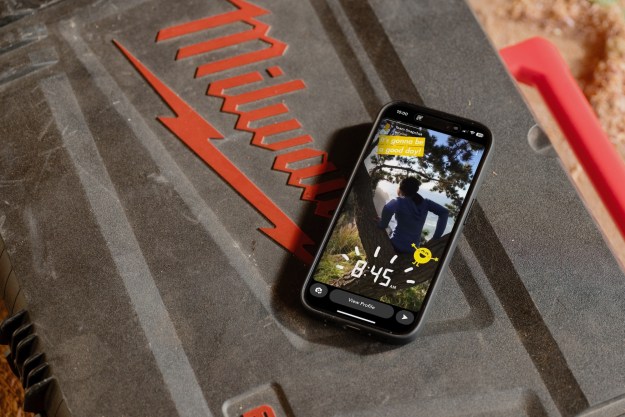Modern phone screens can look amazing, but there’s no getting away from the fact they’re usually quite small, especially for comfortably watching a lengthy video. TCL Communications has the answer with the TCL NXTWear G, a wearable display that puts a 140-inch equivalent screen right in front of your eyes.

The NXTWear G have a sunglass-like design, and are fairly lightweight at about 100 grams, so wearing them for the duration of the average movie shouldn’t be a problem. You stare at dual Sony OLED screens each with a Full HD resolution, which gives the impression of looking at a 140-inch, 16:9 aspect ratio screen. TCL says the NXTWear G will show both 3D and 4K resolution video, and because the glasses understand the position of your body, you can watch standing up, sitting down, or laying down and the screen will always stay in front of your eyes.
Worried about battery life? Don’t be, because there isn’t a battery inside. Instead, the NXTWear G takes power from the device it’s connected to by a USB Type-C cable. It links to your smartphone, tablet, Windows PC, or Mac’s USB Display Port and effectively mirrors what you’d normally see on the screen. You can watch video from your phone, or make video calls from your computer, for example. Because the NXTWear G doesn’t cover your entire face like a Virtual Reality (VR) headset, you should still see the device, desk, or keyboard to work as normal.

TCL says with the glasses connected to a phone — about 100 different models work with the NXTWear G so far — on average the device’s battery should provide enough power to watch about five hours of video. While there are speakers built into the glasses, listening to audio using Bluetooth headphones from the connected device will increase privacy. If you wear glasses normally, there’s the option to add your prescription to a separate lens that magnetically attaches to the inside of the NXTWear G, plus a selection of nose pads are included to help get the best fit. The glasses fold down ready to be stored in a case for easy transportation.
TCL has been talking about its wearable display technology for a while, and it was revealed during CES 2021 as Project Archer. We’ve tried prototypes out at trade shows in the past, but we have yet to try it in this new, much more face-friendly hardware design. When will that change? It may be a little while yet, as TCL’s launch plans start in South Korea and Australia in July, with Europe to follow. A North American release is in the plans, but there’s no timeframe yet.

Part of the reason is how TCL is currently marketing the NXTWear G wearable display. It has struck deals with partners in South Korea and Australia, where the glasses are packaged with a video subscription service, and in some cases a smartphone too. It’s in discussion to bring the NXTWear G to the U.S. in a similar way. It’s a very new type of product, and TCL is exploring ways to help people understand how to get the best from it. It does still intend to sell the NXTWear G separately in some regions, with a projected price of around 599 euros, or about $715.
Editors' Recommendations
- These new smart glasses put a 500-nit, 330-inch screen on your eyes
- TCL’s 20 Pro 5G phone now works wirelessly with TVs, PCs, and tablets
- TCL’s 17-inch ‘Scrollable’ display is still science fiction, but we want to believe



